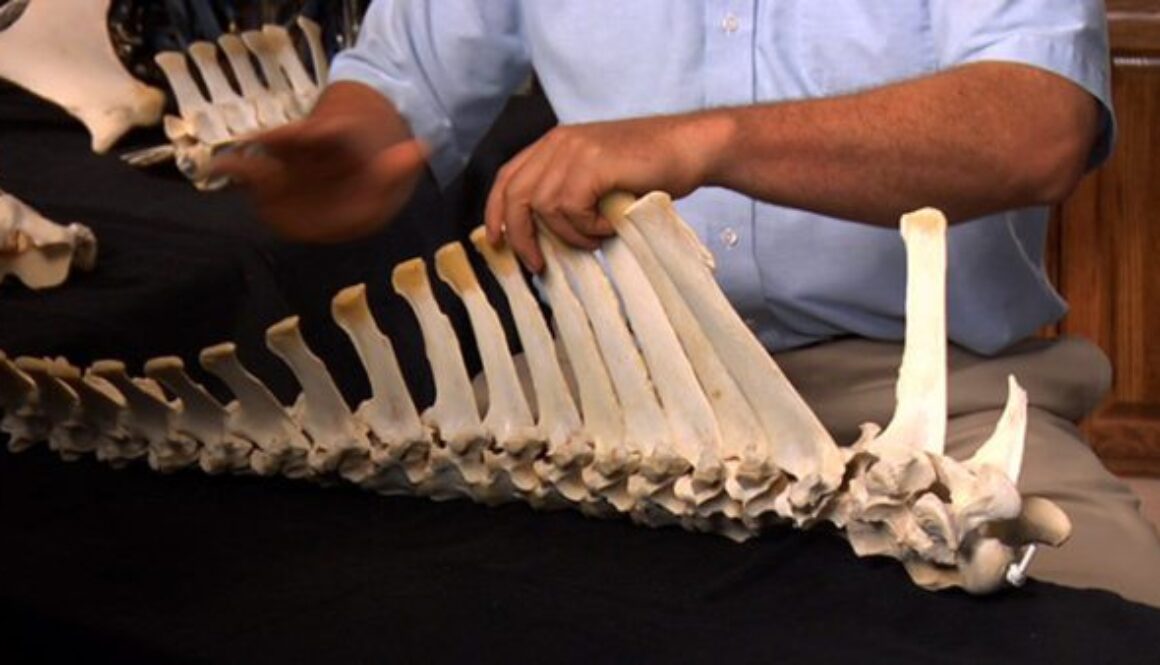MULE CROSSING: Owning an Equine Is Serious Business, Part 3
By Meredith Hodges
As discussed in Parts 1 and 2 of this article, there are many more things to think about before purchasing an equine than you could have ever imagined—from the actual purchase of the equine to the management considerations you need to be aware of on a daily basis. It is so important to always keep in mind that an equine is not an inanimate object like a car that you can tune up, drive (or, in this case, ride) at will, and then put back in 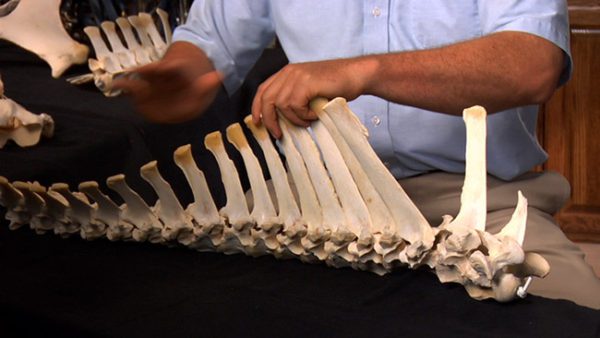 the garage until the next time. In fact, the equine was not anatomically designed to be ridden at all. The idea of riding was a completely human decision.
the garage until the next time. In fact, the equine was not anatomically designed to be ridden at all. The idea of riding was a completely human decision.
In order to more clearly understand this concept, let’s take a closer look at the equine anatomy. The equine is designed with interlocking vertebra in the spine that have long bony “fingers” called spinus processes,which protrude in varying lengths from the interlocking vertebra. The spinus processes“fingers” support the musculature that surrounds the super spinus ligament, which runs the full length of the back. The highest point of the spinus processes is at the withers, where the spinus processes bones are at their longest. They then taper down toward the croup, becoming shorter as they line up across the back. This is a body design that was intended 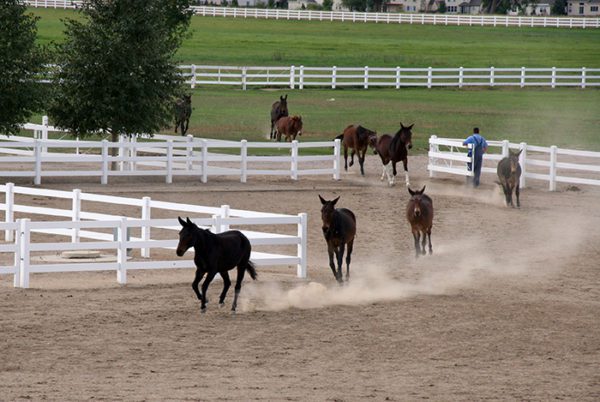 to carry the weight below the spine and not on top of it. Everything in the equine’s mind and body supports this position and, when we train, if we do not pay attention to re-programming the muscles, tendons and ligaments to support the additional weight above the spine in a way that is painless and clearly understood by the equine, they become uncomfortable and even sore, and bad behaviors are almost certain to arise.
to carry the weight below the spine and not on top of it. Everything in the equine’s mind and body supports this position and, when we train, if we do not pay attention to re-programming the muscles, tendons and ligaments to support the additional weight above the spine in a way that is painless and clearly understood by the equine, they become uncomfortable and even sore, and bad behaviors are almost certain to arise.
If you keep the equine anatomical structure and his mental reactions to stimulus in mind, the way to build adequate musculature to carry a rider or pull a vehicle is really quite simple. Equines have a natural willingness to please and become resistant only when they are frightened, hurt or confused by the way they are being asked to do something. Training does not only take place 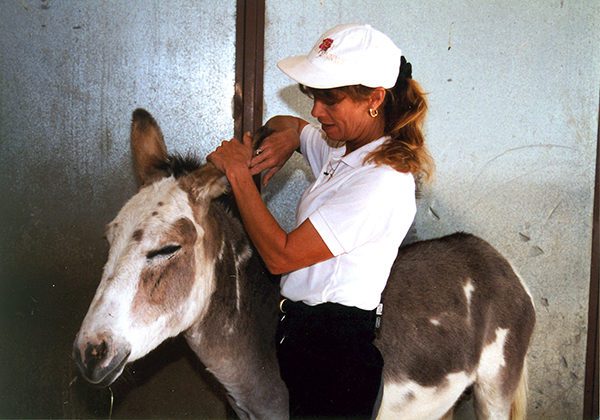 during lessons in your arena or round pen—lessons begin the moment you are within earshot of your animal, so when you go to get your equinefrom his pen or stall, approach with the attitude that you are visiting a friend. Don’t’ just barge into his living space and try to “catch” him—rather, call out his name and say hello in a cheerful voice. Stand at the gate or door and offer a handful of oats, and when your equine comes to see you, let him know you are happy to see him too. Stroke his neck before you put the halter on your equine, and then give him his oats and let him invite you into his space. It won’t be long before he anticipates your arrival and “talks” back to your “Hello.” If you want to make a friend, you first need to be a friend!
during lessons in your arena or round pen—lessons begin the moment you are within earshot of your animal, so when you go to get your equinefrom his pen or stall, approach with the attitude that you are visiting a friend. Don’t’ just barge into his living space and try to “catch” him—rather, call out his name and say hello in a cheerful voice. Stand at the gate or door and offer a handful of oats, and when your equine comes to see you, let him know you are happy to see him too. Stroke his neck before you put the halter on your equine, and then give him his oats and let him invite you into his space. It won’t be long before he anticipates your arrival and “talks” back to your “Hello.” If you want to make a friend, you first need to be a friend!
Here are some important techniques to remember each time you approach your equine:
- Be polite and considerate in your approach and your equine will be more willing to want to go with you. An equine that is “herd bound” and won’t leave his pasture buddies has simply decided that his equine counterparts are nicer to be around than the humans who “use” him, but if your animal feels good when he is with you, he won’t mind leaving his equine companions.
- When you want to pet your equine, let him see that your hand is moving toward him, but keep movements low, slow and non-threatening.
- Stroke his neck, going with the grain of the hair, and never against it.
- Touch his head and other sensitive areas only after you have gained his confidence. Note the way he responds to your touch and alter your touch accordingly. If he flinches, you might be touching him either too lightly and tickling him or you could be touching him too strongly and it hurts. Use the flat of your hand and don’t “poke” at him.
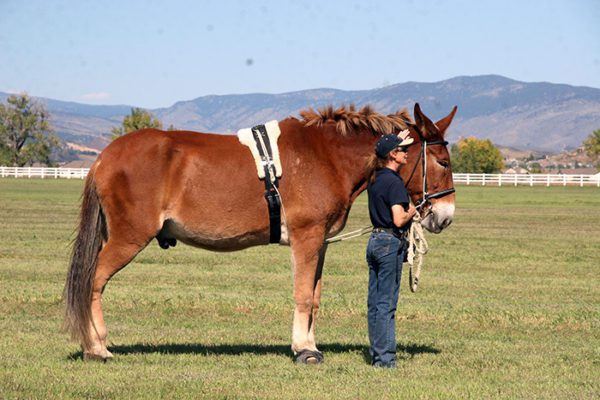 Many people are familiar with imprinting their foals, but what they may not realize is that the purpose of imprinting is not just to get the foal used to human touch and smell. It is, in reality, the first steps in learning
Many people are familiar with imprinting their foals, but what they may not realize is that the purpose of imprinting is not just to get the foal used to human touch and smell. It is, in reality, the first steps in learning
about your equine’s entire body, and then adjusting the way you touch him so that you give him pleasure every time you touch him (except during brief disciplinary actions).
Most of us want to ride and do the more glamorous things that we see people do with equines right away, and we become impatient for the end result and don’t pay adequate attention to the smaller details that lead up to our fantasy. But it is imperative to always remember that equines are very much like young children and need to learn in a slow, logical and sequential way.
Ask yourself these questions:
- How are you leading your animal after you catch him? Are you maintaining good posture?
- How do you groom your animal, and how is the grooming received?
- Are you being polite and considerate in the way you use the grooming tools?
- How is the tack being put on?
Every movement sets the stage for how your equine’s body is being conditioned. So when you are leading your equine, make sure that you are holding the lead rope in your LEFT hand, are that you are moving in good posture yourself. Be sure that you are keeping your equine’s head at your shoulder, that you are pointing in the direction of travel with your right hand and that you are matching your equine’s steps while being clear in your intentions during movement transitions.
Remember: Square up your animal every time he stops to cultivate a new habit of good postural balance through repetition. Be cautious when leading your equine through narrow openings like gates and doorways. Make him allow you to pass through first every time. When you need to make a turn, always take one step forward first and then turn the animal on a gradual arc away from you—don’t make any abrupt movements.
Here are some important points to remember when learning to deal with tack and your new equine:
- When approaching with tack and equipment, allow the equine to smell and inspect it before you put it on him, and then reward him for staying calm.
- When putting on the bridle, be aware of how you take it over the animal’s ears so as not to hurt him.
- When saddling, make sure stirrups and girths are put up and not flopping. Be polite and let the girths and stirrups down easily on each side.
- Then ease the saddle onto your equine’s back, being sure not to tighten the girth all at once. Rather, come back several times and tighten just a little bit more each time until it is snug, but not tight.
- When needed, cruppers are used on riding equines in order to keep the saddle in the correct position on the equine’s back. Make sure you know how to properly place the saddle over his center of gravity (so the girth lies four inches behind the forearm) and then adjust this piece of equipment.
- Breeching is an assembly of straps across the rear quarters of the equine and is fine for packing and driving animals, but it can inhibit the hindquarter range of motion on a riding animal. A crupper is preferred for a riding animal to hold the saddle in place for extreme trail riding, etc.
- If you have a double rigging on your Western saddle, always make sure that the front girth is done first and pulled snug—NOT tight—and that the back girth lays against the body and is just snug enough to keep the back of the saddle from flipping up, but it is not too tight.
- Check your girth periodically when riding to make sure it stays snug enough so that the saddle does not roll toward you on the equine’s back when you try to mount.
- Never use bridle reins or drivelines to tie your equine. When tying your equine, always use a halter and lead rope, and tie to a stout post (NOT fence rails) with a safety release knot.
- Always untie your animal before removing the halter.
Coming up next, the fourth and final installment of Owning an Equine Is Serious Business features a discussion of beginning riding, with many valuable details, tips and safety rules and checklists that you can actually take with you while you are working with your new equine.
To learn more about Meredith Hodges and her comprehensive all-breed equine training program, visit LuckyThreeRanch.com or call 1-800-816-7566. Check out her children’s website at JasperTheMule.com. Also, find Meredith on Facebook, YouTube and Twitter.
© 2012, 2016, 2018, 2023, 2024 Lucky Three Ranch, Inc. All Rights Reserved.

